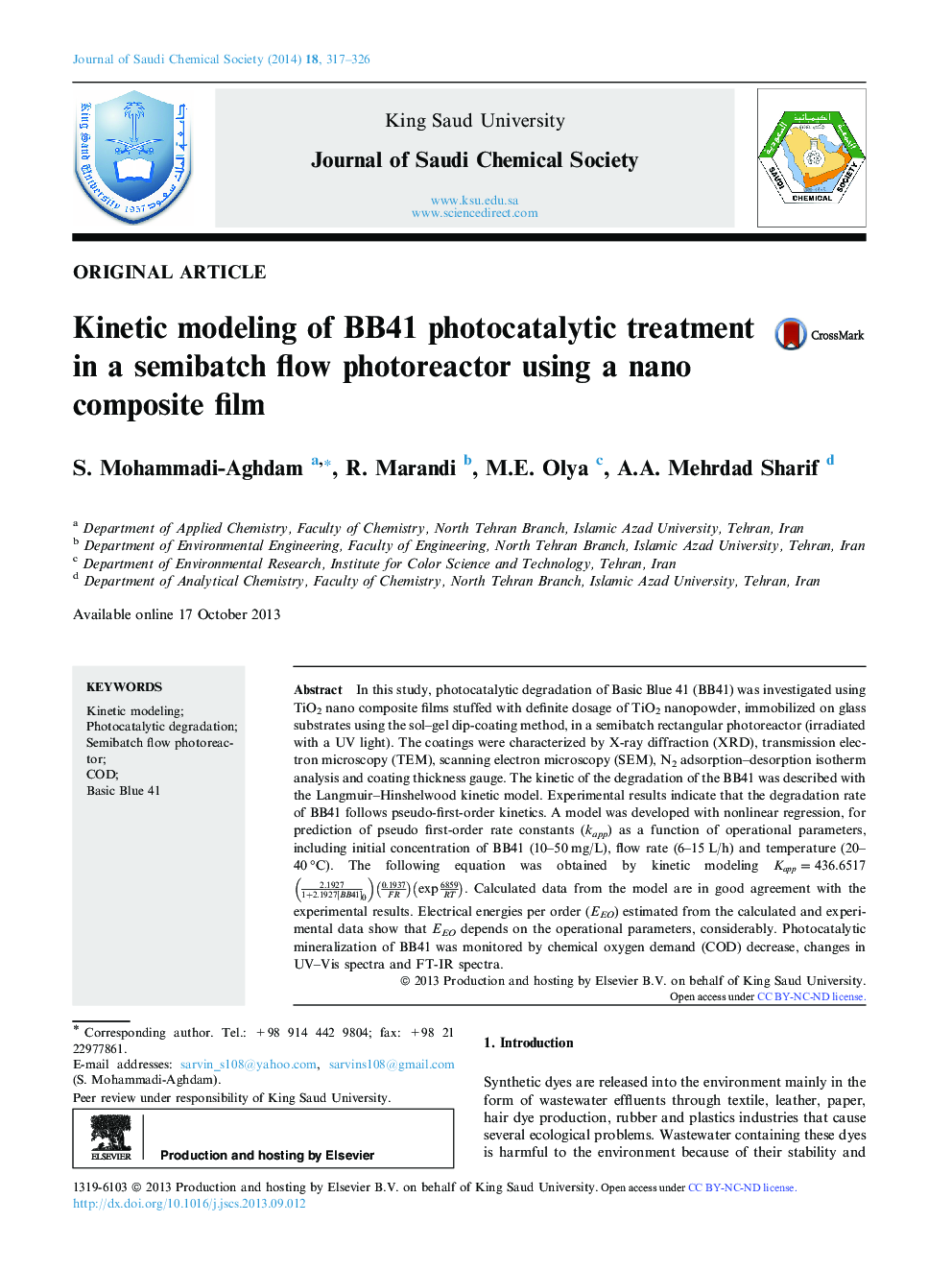| Article ID | Journal | Published Year | Pages | File Type |
|---|---|---|---|---|
| 229676 | Journal of Saudi Chemical Society | 2014 | 10 Pages |
In this study, photocatalytic degradation of Basic Blue 41 (BB41) was investigated using TiO2 nano composite films stuffed with definite dosage of TiO2 nanopowder, immobilized on glass substrates using the sol–gel dip-coating method, in a semibatch rectangular photoreactor (irradiated with a UV light). The coatings were characterized by X-ray diffraction (XRD), transmission electron microscopy (TEM), scanning electron microscopy (SEM), N2 adsorption–desorption isotherm analysis and coating thickness gauge. The kinetic of the degradation of the BB41 was described with the Langmuir–Hinshelwood kinetic model. Experimental results indicate that the degradation rate of BB41 follows pseudo-first-order kinetics. A model was developed with nonlinear regression, for prediction of pseudo first-order rate constants (kapp ) as a function of operational parameters, including initial concentration of BB41 (10–50 mg/L), flow rate (6–15 L/h) and temperature (20–40 °C). The following equation was obtained by kinetic modeling Kapp=436.65172.19271+2.1927[BB41]00.1937FRexp6859RT. Calculated data from the model are in good agreement with the experimental results. Electrical energies per order (EEO) estimated from the calculated and experimental data show that EEO depends on the operational parameters, considerably. Photocatalytic mineralization of BB41 was monitored by chemical oxygen demand (COD) decrease, changes in UV–Vis spectra and FT-IR spectra.
